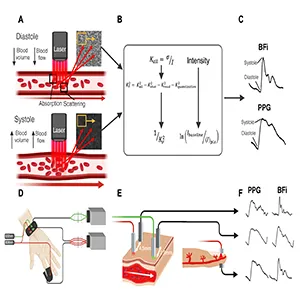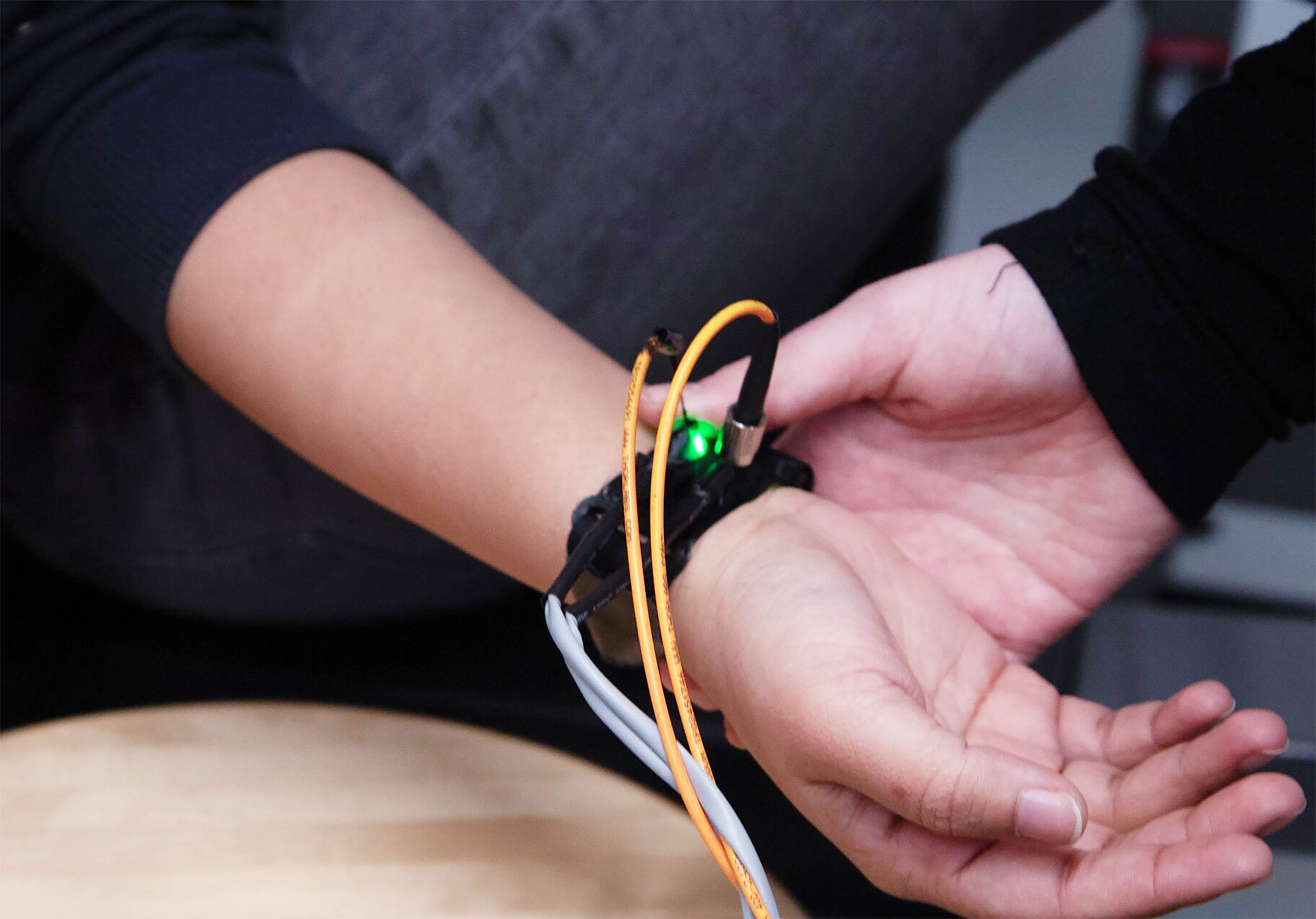Imagine checking your blood pressure as easily as glancing at a smartwatch, without the squeeze of a cuff interrupting your day.
Researchers at Boston University have taken a major step toward making that future a reality. For the first time, they’ve demonstrated that speckle contrast optical spectroscopy (SCOS) can monitor blood pressure without a cuff.
“Hypertension affects nearly half of all adults in the U.S. and is the leading cause of cardiovascular disease,” said Ariane Garrett, a doctoral student in Darren Roblyer’s lab at Boston University.
“This research is a step toward a wearable device that would let people monitor their blood pressure anytime, without a cuff.”
The study shows that SCOS can capture blood flow and volume information simultaneously using a small optical device placed on the wrist or finger, providing up to 31 percent greater accuracy in estimating blood pressure compared to using blood volume signals alone.
This could improve early detection of hypertension, including masked hypertension that may go unnoticed in clinic readings.
Understanding blood pressure
Blood pressure is the force your blood exerts against the walls of your arteries as your heart pumps it around your body.
It’s measured using two numbers: systolic pressure (the higher number) is the pressure when your heart beats, and diastolic pressure (the lower number) is the pressure when your heart rests between beats.
Together, these numbers give a snapshot of how hard your heart is working and how relaxed your blood vessels are. A normal reading typically falls around 120/80 mmHg, but this can vary depending on age, activity, and health.
When blood pressure climbs too high – what doctors call hypertension – it can quietly damage your body over time. Your arteries may stiffen, your heart may strain, and your risk for stroke, heart attack, and kidney problems goes up.
On the flip side, if your blood pressure drops too low, your body may not get enough oxygen-rich blood, which can make you feel dizzy or faint.
Light reveals blood pressure patterns
SCOS works by analyzing patterns created when coherent laser light scatters from moving red blood cells and tissues. Previously used for brain blood flow, the technique now opens new doors for cuffless blood pressure monitoring.
“Studies show that tracking blood pressure throughout the day, and especially at night, provides a better picture of someone’s health,” Roblyer said.
“A wearable version of our device would be easier and more comfortable for patients, and could help doctors catch conditions like masked hypertension, where clinic readings don’t reflect the true blood pressure.”
The technology’s ability to monitor blood pressure continuously and comfortably is crucial because traditional cuff-based measurements in clinics often capture only a snapshot of a person’s cardiovascular health, missing critical fluctuations throughout the day and night.
Turning light into insight
The work began as a collaboration between Boston University and Meta Platforms’ Reality Labs. The team, including co-investigator David Boas, formed a key hypothesis. They believed SCOS waveforms of blood flow and volume held valuable cardiovascular data.
In 2023, they established a strong correlation between features of blood flow waveforms and blood pressure.
Their new study shows combining blood flow and volume data improves the accuracy of blood pressure predictions.

“The SCOS device enables us to measure blood pressure much more frequently than a cuff-based device,” Roblyer noted.
“There has been a lot of research indicating that single time-point measurements of blood pressure using a cuff in a clinician’s office are not a good reflection of a person’s true blood pressure in daily life,” he said. “However, it is difficult to take frequent cuff measurements due to the cumbersome nature of the cuff.”
Pressure tested during daily activity
To evaluate their system, the researchers tested SCOS on 30 volunteers. The team captured blood flow and volume data while participants were at rest.
They also collected data during leg press exercises designed to increase blood pressure. These measurements were compared with readings from a continuous blood pressure monitor for validation.
Using a machine learning model, the team trained two versions: one using both blood flow and volume signals, and another using only volume data, as current photoplethysmography devices do.
The combined model showed up to a 31% improvement in accuracy. It reached a 2.26 mmHg error for systolic pressure – a major improvement over current non-invasive methods.
“Our results showed that SCOS improves blood pressure estimation by enabling simultaneous measurements of blood flow and volume changes using the wrist or finger,” Garrett said. “This opens a new way to track cardiovascular health with optical tools.”
The path to wearable monitoring
Encouraged by the results, the team aims to develop a wearable SCOS device for continuous, everyday blood pressure monitoring.
The plan includes shrinking the system, adding onboard processing, and ensuring accuracy during movement and long-term wear.
This development aligns with a broader push in healthcare toward non-invasive, continuous monitoring, which could transform hypertension management and prevention.
Frequent, comfortable monitoring could help patients and doctors detect abnormal trends earlier, adjust treatment in real time, and empower individuals to take a more active role in their cardiovascular health.
In a world where hypertension silently affects millions, innovations like SCOS could help reduce cardiovascular disease risk. They offer a seamless way to track one of the most critical health measures – without the discomfort of the traditional cuff.
The study is published in the journal Biomedical Optics Express.
—–
Like what you read? Subscribe to our newsletter for engaging articles, exclusive content, and the latest updates.
Check us out on EarthSnap, a free app brought to you by Eric Ralls and Earth.com.
—–
